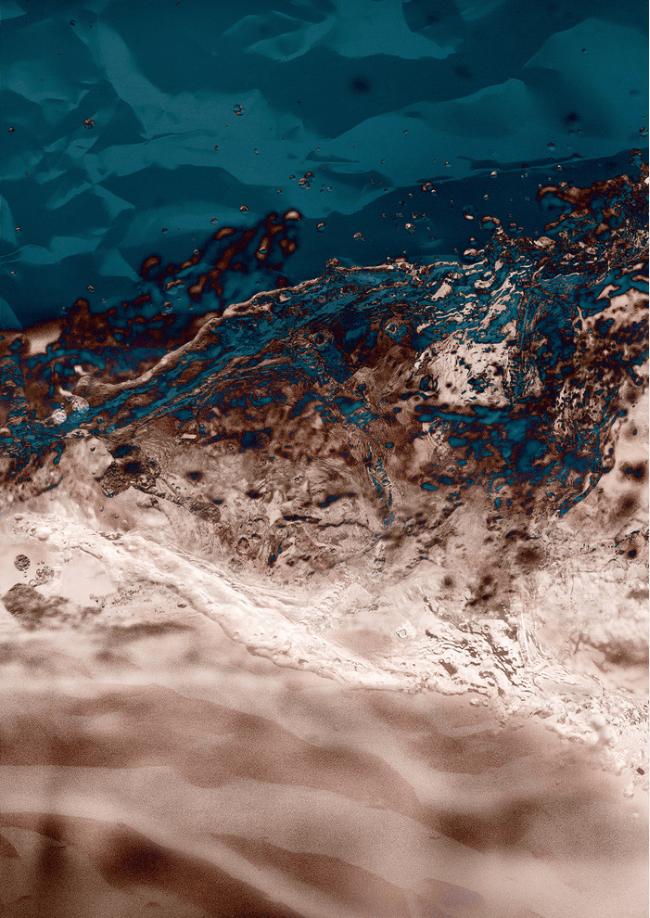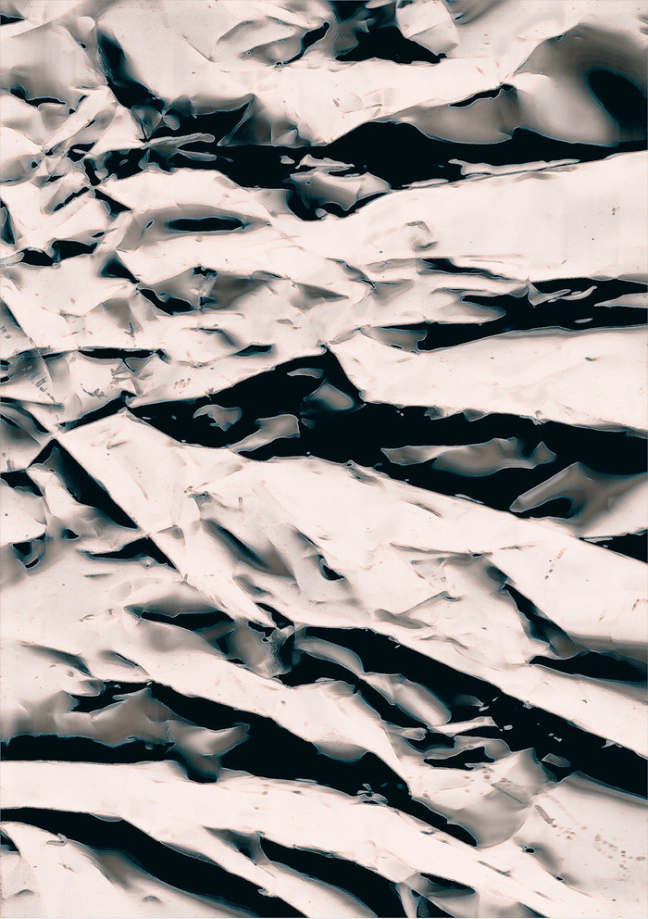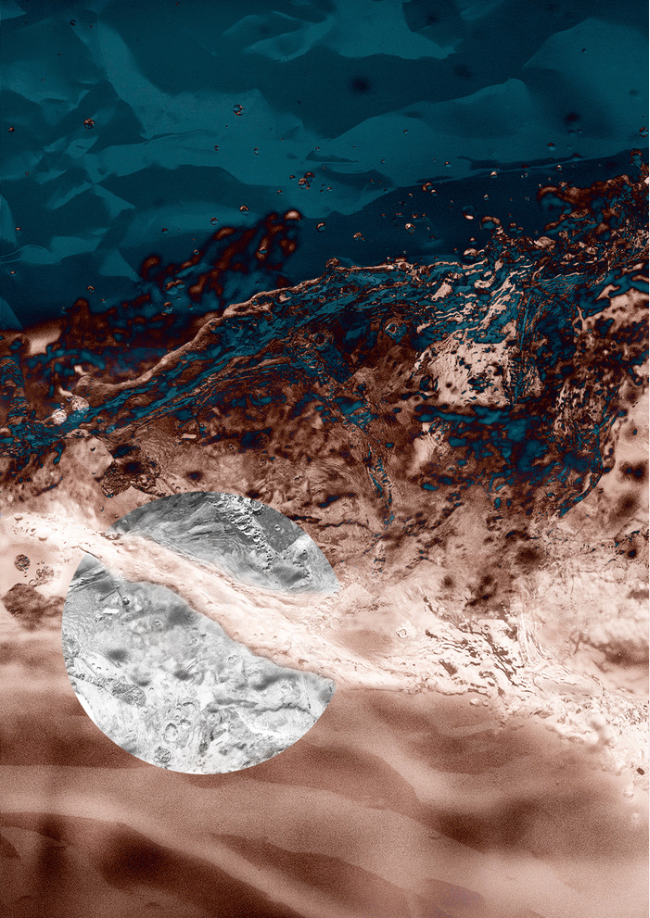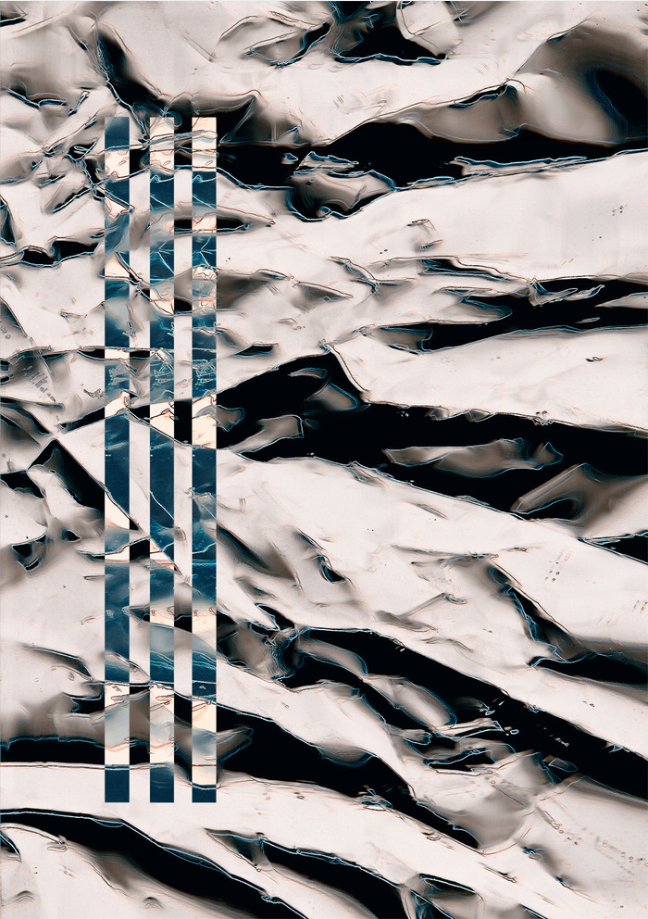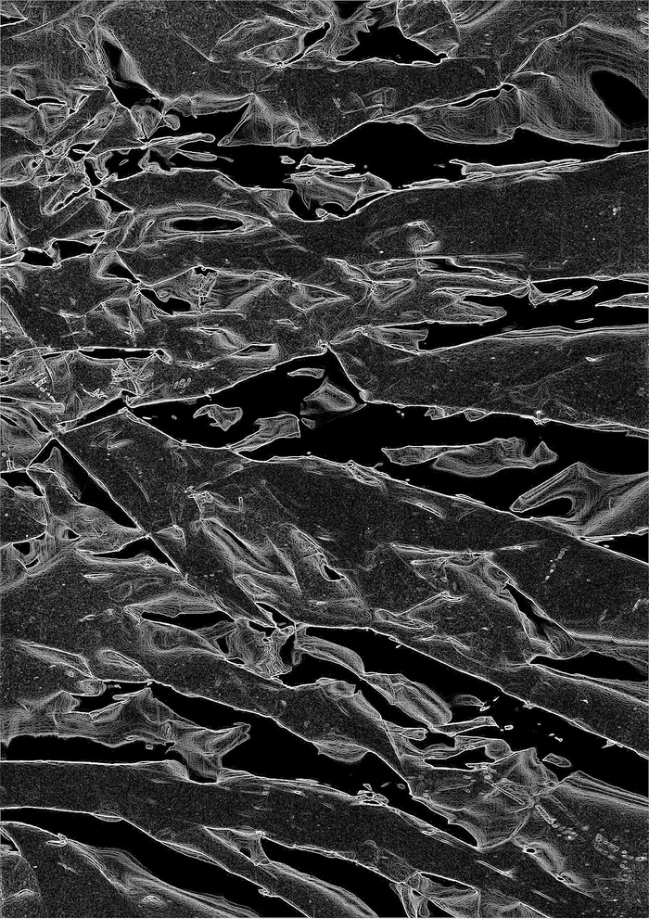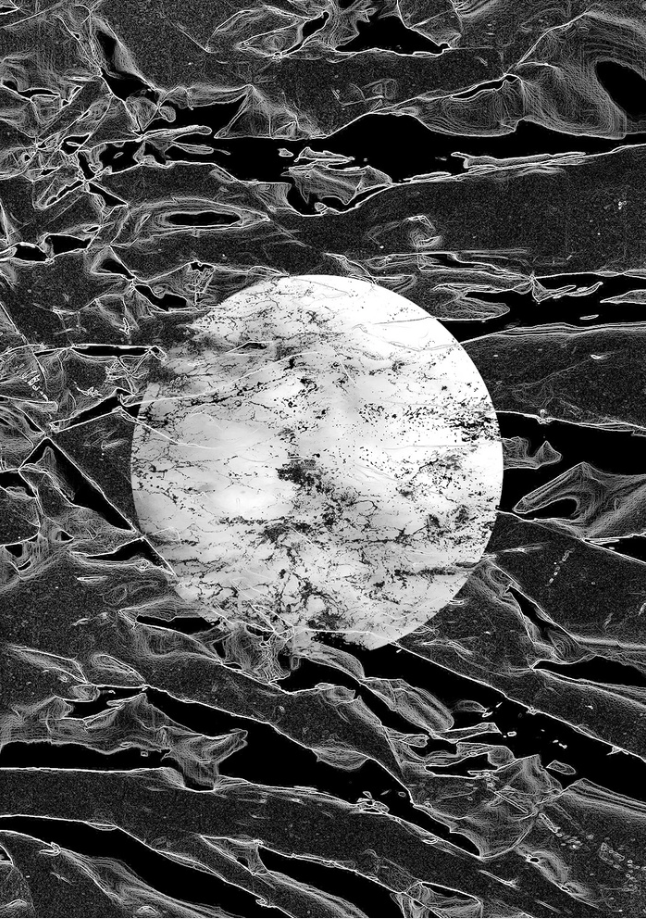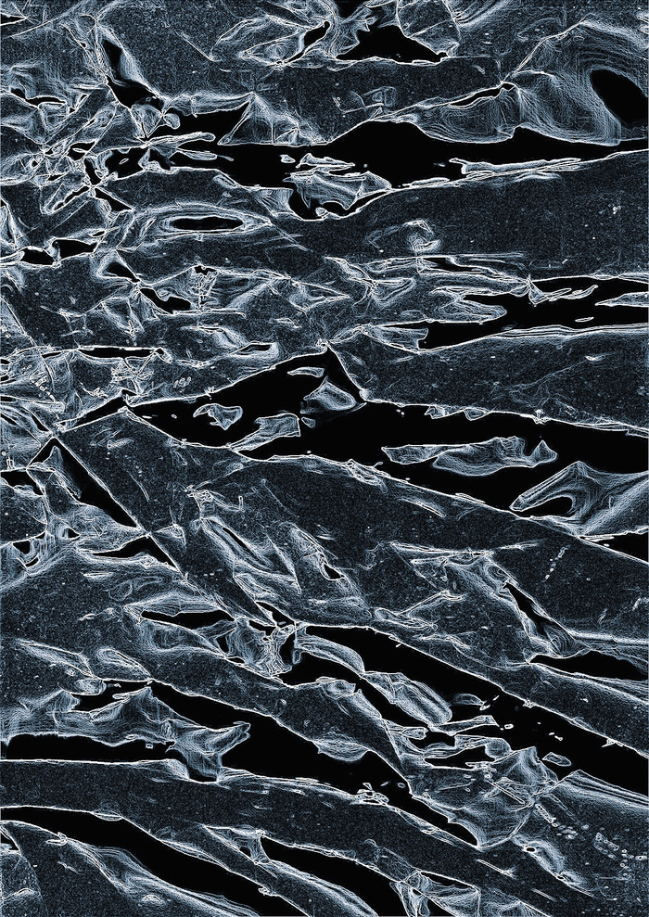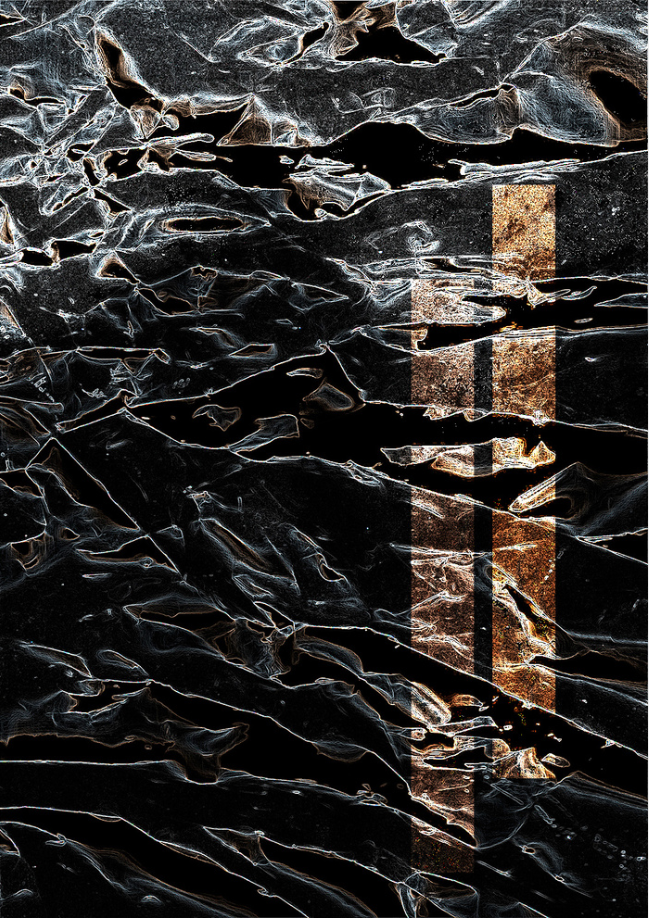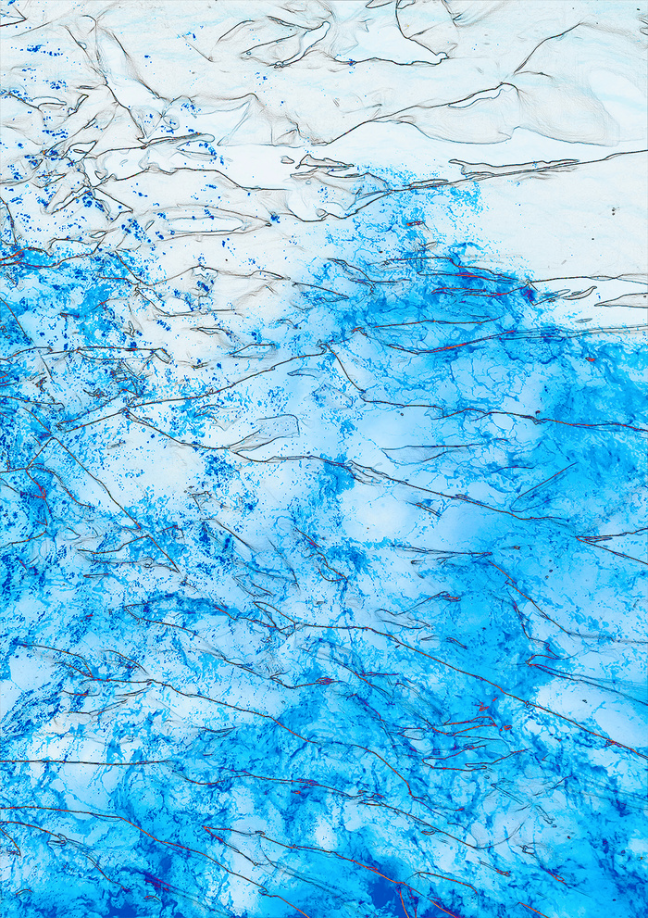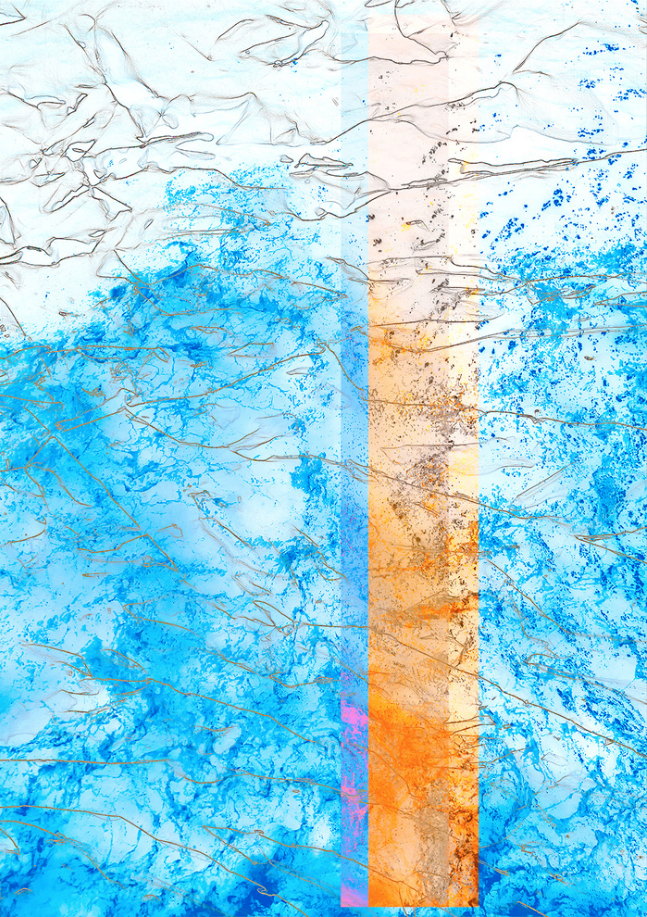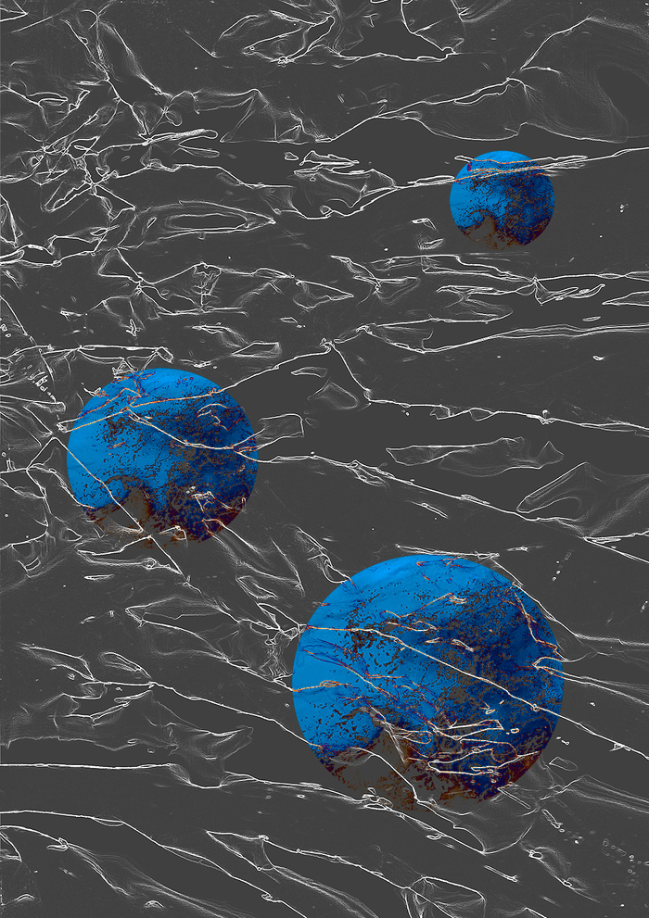Yas Crawford
Nature Energy Technology
Inception I, Yas Crawford
Nature Energy Technology
Gold Circle is excited to present a showcase and in-depth Q&A with internationally awarded UK-based art photographer, Yas Crawford.
Crawford’s practice comprises an engaging multi-disciplinary body of work that explores the space between art and science, by exposing the contrast between the organic and the constructed - something she refers to as ‘the ambiguous and unknown’. Through elaborate craftsmanship and innovative techniques that include scanning, 3D printing, cutting and replacing, Crawford’s work brings together the artistic and scientific perspectives influenced by her own background as a Geologist, an Associate of the Royal Photographic Society and a Fellow of the Geological Society.
In this Q&A, Crawford talks to Marina Syrmakezi, Founder and Curator at Gold Circle about her series titled ‘Nature Energy Technology’, in which she examines the constant change within the Anthropocene and visualises earth at its earlier inception. Through a combination of geometrical shapes interlaced within the organic forms in the images, she creates a visual contrast that reflects the thematic duality of the organic versus the artificial.
Crawford’s practice comprises an engaging multi-disciplinary body of work that explores the space between art and science, by exposing the contrast between the organic and the constructed - something she refers to as ‘the ambiguous and unknown’. Through elaborate craftsmanship and innovative techniques that include scanning, 3D printing, cutting and replacing, Crawford’s work brings together the artistic and scientific perspectives influenced by her own background as a Geologist, an Associate of the Royal Photographic Society and a Fellow of the Geological Society.
In this Q&A, Crawford talks to Marina Syrmakezi, Founder and Curator at Gold Circle about her series titled ‘Nature Energy Technology’, in which she examines the constant change within the Anthropocene and visualises earth at its earlier inception. Through a combination of geometrical shapes interlaced within the organic forms in the images, she creates a visual contrast that reflects the thematic duality of the organic versus the artificial.
Inception II, Yas Crawford
Can you tell us what inspired the works behind ‘Nature Energy Technology’?
It started with the Series ‘Lombardy’, when I wanted to create a series of images of abstract landscapes of the Italian Alps around the Valli Intelvi region in 2020. To do this I started sketching the outlines of the mountain ranges, however, sketching alone just didn’t achieve the relief that I needed, so I started folding and crushing paper, this retained the outline whilst adding a lovely 3D effect. This series ‘Lombardy’ remains unfinished as I continue to explore displacement but in a different way. The Nature Energy Technology series uses similar methods to the Lombardy Series, but this time I was interested in displacing the landscape in a way that reflected technological change and the impact it has on the environment around us. A change that would show how technology is often advancing faster than human wisdom.
It started with the Series ‘Lombardy’, when I wanted to create a series of images of abstract landscapes of the Italian Alps around the Valli Intelvi region in 2020. To do this I started sketching the outlines of the mountain ranges, however, sketching alone just didn’t achieve the relief that I needed, so I started folding and crushing paper, this retained the outline whilst adding a lovely 3D effect. This series ‘Lombardy’ remains unfinished as I continue to explore displacement but in a different way. The Nature Energy Technology series uses similar methods to the Lombardy Series, but this time I was interested in displacing the landscape in a way that reflected technological change and the impact it has on the environment around us. A change that would show how technology is often advancing faster than human wisdom.
In your work, you choose to explore the space between art and science by contrasting the organic and the constructed - something you refer to as ‘the ambiguous and unknown’. How do you approach the task of visualising such opposing forces? Is this for you more a synergy or a clash of perspectives?
That is a really good question. I have never thought of the opposing forces as a clash of perspectives, more of an unavoidable synergy that we need to explore and understand. Nature Energy Technology explores the constructed but also a way to deconstruct. I often think studying Geology at Cardiff University, for my first degree appealed to both my interest in science but also my sense of art, allowing me to visualise the world around me in 3D. The ‘Grey Space’ that remains at the core of my work, can be described as ambiguous and unknown just because it often is. Visualising comes quite easily and is nearly always triggered from reading research papers or books around the subject, this combined with the vision created in my mind is how it begins to come together.
That is a really good question. I have never thought of the opposing forces as a clash of perspectives, more of an unavoidable synergy that we need to explore and understand. Nature Energy Technology explores the constructed but also a way to deconstruct. I often think studying Geology at Cardiff University, for my first degree appealed to both my interest in science but also my sense of art, allowing me to visualise the world around me in 3D. The ‘Grey Space’ that remains at the core of my work, can be described as ambiguous and unknown just because it often is. Visualising comes quite easily and is nearly always triggered from reading research papers or books around the subject, this combined with the vision created in my mind is how it begins to come together.
Another combination of strong forces in the work is that of energy and time. You reference the constant change within the Anthropocene and visualising earth at its earlier inception. Could you tell us about the importance of capturing this constant change and how that influences the creative process in the studio?
Wouldn’t it be fabulous to create an image of time and the energy that dissipates from it. An interesting example, I often think of, is the Snowball Earth Ice Ages that have occurred when the planet has frozen, completely trapped in an icy state for over 10s to 100’s of millions of years. How energy is required to drive this force, but also becomes trapped in its frozen state is an interesting balance between the two. Energy and time create interesting parallels as we incur changes both from the Holocene to the Anthropocene, now in the Anthropocene but also changes in technological energy that are required to create the artworks.
Wouldn’t it be fabulous to create an image of time and the energy that dissipates from it. An interesting example, I often think of, is the Snowball Earth Ice Ages that have occurred when the planet has frozen, completely trapped in an icy state for over 10s to 100’s of millions of years. How energy is required to drive this force, but also becomes trapped in its frozen state is an interesting balance between the two. Energy and time create interesting parallels as we incur changes both from the Holocene to the Anthropocene, now in the Anthropocene but also changes in technological energy that are required to create the artworks.
Inception III, Yas Crawford
The final pieces are the result of elaborate craftsmanship that includes scanning, 3D printing, cutting and replacing amongst other techniques. Can you describe the process of creating these works and what has led you to develop this practice?
Influences really come from practical experiences, that wonderful hands-on approach of watching my father develop film for scans and photographs, creating hand drawn maps during my geology degree and working with cameraless techniques as alternative practice during my MA at Falmouth University. Cameraless techniques, whatever they are, explore other practical ways to achieve the result that you might fail to visualise through a digital camera for example.
The Nature Energy Technology series uses similar methods to the Lombardy Series, but this time I use silver and gold foil paper as a starting point to create sculptural pieces. These are then scanned, digitally enhanced to clearly reveal the topography and act as a background for the final artwork. Strips or circles are cut from the printed pieces (or before scanning) and moved around sometimes manually and sometimes digitally in the artwork. This movement or displacement of the original landscape responds to the severity of interaction of technology with our natural environment. The cut pieces are moveable, disposable, and therefore reflect the fragility of our environment but also a way for the displacement to be reversed. Natural elements, such as water or dissolved soil are added in at different stages, either photographed and added in digitally or added to the scanner before photographing. (Inception 0)
Influences really come from practical experiences, that wonderful hands-on approach of watching my father develop film for scans and photographs, creating hand drawn maps during my geology degree and working with cameraless techniques as alternative practice during my MA at Falmouth University. Cameraless techniques, whatever they are, explore other practical ways to achieve the result that you might fail to visualise through a digital camera for example.
The Nature Energy Technology series uses similar methods to the Lombardy Series, but this time I use silver and gold foil paper as a starting point to create sculptural pieces. These are then scanned, digitally enhanced to clearly reveal the topography and act as a background for the final artwork. Strips or circles are cut from the printed pieces (or before scanning) and moved around sometimes manually and sometimes digitally in the artwork. This movement or displacement of the original landscape responds to the severity of interaction of technology with our natural environment. The cut pieces are moveable, disposable, and therefore reflect the fragility of our environment but also a way for the displacement to be reversed. Natural elements, such as water or dissolved soil are added in at different stages, either photographed and added in digitally or added to the scanner before photographing. (Inception 0)
Inception IIId, Yas Crawford
The addition of geometrical shapes interlaced within the organic shapes in the images creates a visual contrast that reflects the thematic duality of the organic versus the artificial.
Geometric shapes and patterns are something that really appeals to me, to use as part of my artwork. Geometrical shape is reflected in so many aspects of our natural environment just as we might see fractals when we are exploring shape in biology. Geometric thinking plays a part in understanding so many aspects of science, for example, it supports our understanding of organic chemistry along with topographical thinking. For me the geometry brings a simplicity to the imagery, something for it to hang onto, something that helps the imagery flow but also something that admires and despises technological change. I explore this a little, in my series, Shape, Light and Order where I suggest that the orientation of the light, provides a king of wisdom.
Geometric shapes and patterns are something that really appeals to me, to use as part of my artwork. Geometrical shape is reflected in so many aspects of our natural environment just as we might see fractals when we are exploring shape in biology. Geometric thinking plays a part in understanding so many aspects of science, for example, it supports our understanding of organic chemistry along with topographical thinking. For me the geometry brings a simplicity to the imagery, something for it to hang onto, something that helps the imagery flow but also something that admires and despises technological change. I explore this a little, in my series, Shape, Light and Order where I suggest that the orientation of the light, provides a king of wisdom.
What is the process behind selecting where to intervene within an image and to add the more defined forms?
I am pleased you asked this question. It’s an important question for all artists at all stages of their work, when to intervene? When to stop? Whilst I am working, the artwork created is often instinctive, although usually well researched. This instinct allows the art to overtake the science, so that it’s not too confined or defined by the subject. I am particularly conscious of this when creating artwork around health conditions, so that the audience don’t feel defined by a particular illness or disease. The intervention arrives when I feel that the imagery hasn’t achieved what I set out to do or if I want to make more of a statement with a certain piece or the piece might just naturally develop in a more complex form. There isn’t a process that I follow exactly.
I am pleased you asked this question. It’s an important question for all artists at all stages of their work, when to intervene? When to stop? Whilst I am working, the artwork created is often instinctive, although usually well researched. This instinct allows the art to overtake the science, so that it’s not too confined or defined by the subject. I am particularly conscious of this when creating artwork around health conditions, so that the audience don’t feel defined by a particular illness or disease. The intervention arrives when I feel that the imagery hasn’t achieved what I set out to do or if I want to make more of a statement with a certain piece or the piece might just naturally develop in a more complex form. There isn’t a process that I follow exactly.
What is the most challenging aspect of creating these complex works in the studio?
The fact that I don’t have a proper studio-space. The hardest thing in a relatively small space is not being able to leave various stages of the work out so that I can think about if for a while and then having to re-set up each time when I need to photograph, or re-photograph objects or shapes can be frustrating. I work on a long white table with scanner and printer that’s easily accessible; this helps as I can quickly print mock-ups up to A3 in size. I have a smaller table for the digital work, writing and researching and books in various rooms. Sounds chaotic for someone whose quite organised usually, although my head is so full of ideas it can be hard to process them all at any one time.
How has your own scientific background influenced the development of your practice?
From a photographic perspective, I have been lucky to work with all types of analogue and digital cameras; from scanning electron microscopes to optical microscopes identifying minerals in rock samples to identifying bacteria in a microbiology laboratory. I have always been quite a hands-on practical person and so experimenting comes easily to me. I am also very curious about the world and constantly learning through taking courses and reading. I am presently working with an Assistant Professor of Neuroscience in Rotterdam on a neurological project at the cellular level and the science background, of course, helps our collaboration. The visual art inspiration comes from experience of working in all kinds of industries from manufacturing to laboratory testing. I have always been interested in the arts too and drawn to form, colour shape and how to utilise this: from designing packaging to creating a contemporary company feel for a new startup company. In summary though my interest and experience of the geological, what is biological and mapping evolutionary change and the impact it has on mankind gives me my direction and purpose in my life and in my work.
From a photographic perspective, I have been lucky to work with all types of analogue and digital cameras; from scanning electron microscopes to optical microscopes identifying minerals in rock samples to identifying bacteria in a microbiology laboratory. I have always been quite a hands-on practical person and so experimenting comes easily to me. I am also very curious about the world and constantly learning through taking courses and reading. I am presently working with an Assistant Professor of Neuroscience in Rotterdam on a neurological project at the cellular level and the science background, of course, helps our collaboration. The visual art inspiration comes from experience of working in all kinds of industries from manufacturing to laboratory testing. I have always been interested in the arts too and drawn to form, colour shape and how to utilise this: from designing packaging to creating a contemporary company feel for a new startup company. In summary though my interest and experience of the geological, what is biological and mapping evolutionary change and the impact it has on mankind gives me my direction and purpose in my life and in my work.
Inception IV, Yas Crawford
Are there any other influences by makers or artists in your work you could talk to us about?
The series Nature Energy Technology has quite subdued colours often brightened by topographic outlines and the cut-out pieces. Illustrators such as Katsushika Hokusai’s, 1803 ‘Plum blossom and the moon’ reflect aspects of appearing moons in my work, this work reflecting the vitality and vigor of nature. Itō Jackuchū, 1775, White Plum Blossoms and the Moon has a similar feel too. Recently I saw the works of the figurative artist, Danica Lundy at the White Cube, London. Danica’s exhibition ‘Stop Bath’ was mind-blowing for me. Looking through portholes, revealing a little of the unknown and her mind-made structures a reflection of the way I think and visualise my work.
There are so many influences, but I am not sure how much all of them appear in my work, or this series in particular. I’m stimulated by photographers that use film, particularly monochrome and black and white, this probably reflects my analogue days. Photographers Luke Evans and Josh Lake and their work on the Digestive Tract using a Scanning Electron Microscope (after eating 35mm film!) reflects work I did on Cyanobacteria at one time. In complete contrast Francis Bacon and his stronger use of colour and diptychs as in ‘Three Studies for Figures at the base of the Crucifixion’. The triptych and division of his artwork interests me when exploring parallels between colour and no colour, between the organic and inorganic and between the unknown and the ambiguous.
The series Nature Energy Technology has quite subdued colours often brightened by topographic outlines and the cut-out pieces. Illustrators such as Katsushika Hokusai’s, 1803 ‘Plum blossom and the moon’ reflect aspects of appearing moons in my work, this work reflecting the vitality and vigor of nature. Itō Jackuchū, 1775, White Plum Blossoms and the Moon has a similar feel too. Recently I saw the works of the figurative artist, Danica Lundy at the White Cube, London. Danica’s exhibition ‘Stop Bath’ was mind-blowing for me. Looking through portholes, revealing a little of the unknown and her mind-made structures a reflection of the way I think and visualise my work.
There are so many influences, but I am not sure how much all of them appear in my work, or this series in particular. I’m stimulated by photographers that use film, particularly monochrome and black and white, this probably reflects my analogue days. Photographers Luke Evans and Josh Lake and their work on the Digestive Tract using a Scanning Electron Microscope (after eating 35mm film!) reflects work I did on Cyanobacteria at one time. In complete contrast Francis Bacon and his stronger use of colour and diptychs as in ‘Three Studies for Figures at the base of the Crucifixion’. The triptych and division of his artwork interests me when exploring parallels between colour and no colour, between the organic and inorganic and between the unknown and the ambiguous.
See more works from the Nature Energy Technology series
All images ©Yas Crawford. 2021 . Inception 0
Bio
Yas Crawford is an internationally awarded Art Photographer who has exhibited in the UK and Europe. Crawford is an Associate of the Royal Photographic Society and a Fellow of the Geological Society. She was born in Pembrokeshire, Wales where the landscape and biological make-up have subliminally influenced her work. With a degree in Geology and a master’s in Photography, Crawford has worked in various business roles, an entrepreneur in life sciences, and now working in what she calls ‘The Grey Space’ in-between disciplines. Crawford's research touches on mapping evolutionary change and the impact it has on mankind.
Crawford's artwork has been recognised over the last two years with several international awards including Winner of the Art of Neuroscience Award 2021 for Cognition IX, Winner of the Land Air 4.0 Quasi Quadro Award 2021 with Inception I, Finalist of the RPS Science Photographer of the Year 2019 for Oxygen Ib. Crawford held her first solo exhibition 'Cellular Flow, I've been thinking...' in Barge, Turin 11 Dec 2021 to 25 Feb 2022.
Multidisciplinary collaborations include: a neurological project/video animation with a MSc Animation graduate from Tehran University of Art 2021-2022, an evolutionary biology project with Nottingham University/UK Pint of Science, research on mapping neural activity in the brain for The John Curtin School of Medical Research, ANU, Canberra and PhD research on the immune system of M.E/CFS patients, Quadram Institute of Biosciences, Norwich.
www.yascrawford.com
Crawford's artwork has been recognised over the last two years with several international awards including Winner of the Art of Neuroscience Award 2021 for Cognition IX, Winner of the Land Air 4.0 Quasi Quadro Award 2021 with Inception I, Finalist of the RPS Science Photographer of the Year 2019 for Oxygen Ib. Crawford held her first solo exhibition 'Cellular Flow, I've been thinking...' in Barge, Turin 11 Dec 2021 to 25 Feb 2022.
Multidisciplinary collaborations include: a neurological project/video animation with a MSc Animation graduate from Tehran University of Art 2021-2022, an evolutionary biology project with Nottingham University/UK Pint of Science, research on mapping neural activity in the brain for The John Curtin School of Medical Research, ANU, Canberra and PhD research on the immune system of M.E/CFS patients, Quadram Institute of Biosciences, Norwich.
www.yascrawford.com

